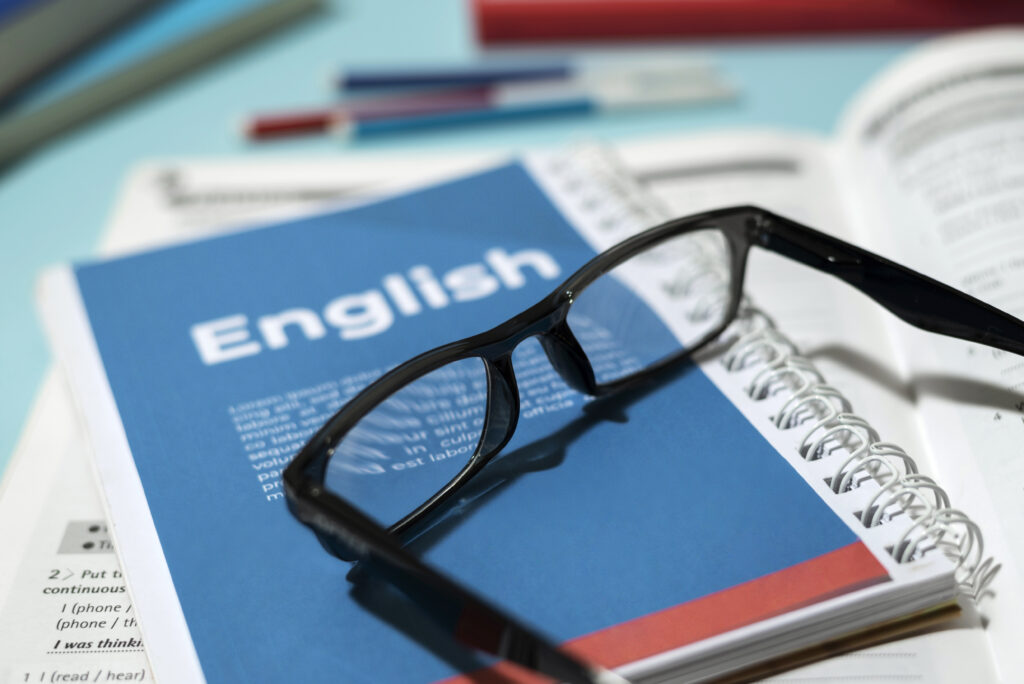Table of Contents
Auxiliary verbs | An overview
Auxiliary verbs are essential in English grammar as they provide additional information about the verb, such as tense, aspect, voice, and mood. Understanding the different types of auxiliary verbs and their functions can help us communicate more effectively and clearly. In this comprehensive guide, we will delve into the power of auxiliary verbs and provide you with the tools and knowledge to take your language proficiency to new heights.
What are auxiliary verbs?
Auxiliary or helping verbs work in conjunction with the main verb to create different verb forms. In English, the main verb alone cannot always express the tense or mood of a sentence. Helping verbs provide additional information about the verb, such as the tense, aspect, voice, and mood. They are used with main verbs to create a complete sentence. English’s most common auxiliary verbs are ‘be,’ ‘do,’ and ‘have.’
For example, consider the sentence, “She is singing a song.” Here, the auxiliary verb “is” indicates the present continuous tense. Without the auxiliary verb, the sentence would be incomplete and ambiguous.
Types of auxiliary verbs
There are two types of auxiliary verbs in English: primary and modal. Primary verbs include “be,” “do,” and “have,” while modal verbs include “can,” “could,” “may,” “might,” “shall,” “should,” “will,” “would,” and “must.”
1. Primary auxiliary verbs
These verbs are used to create different verb forms and convey tense. For example, “be” forms the present continuous and passive voice, while “do” forms questions and negative statements. “Have” forms perfect tenses, such as the present and past perfect.
Here are the following types:
a) Be
The verb ‘be’ creates progressive verb forms and indicates the present, past, or future tense.
Examples:
- He is playing football.
- She was reading a book.
- They will be traveling to Paris next month.
In the above examples, ‘is,’ ‘was,’ and ‘will be’ are forms of the auxiliary verb ‘be’ used to create progressive verb forms.
b) Do
The verb ‘do’ creates negative and interrogative verb forms in the present and past tense.
Examples:
- I do not like pizza.
- Do you know the answer?
- They did not come to the party.
In the above examples, ‘do not,’ ‘Do you,’ and ‘did not’ are forms of the auxiliary verb ‘do’ used to create negative and interrogative verb forms.
c) Have
The auxiliary verb ‘have’ creates perfect verb forms in the present, past, or future tense.
Examples:
- She has written a book.
- They had finished their homework.
- We will have completed the project by next week.
In the above examples, ‘has,’ ‘had,’ and ‘will have’ are forms of the auxiliary verb ‘have’ used to create perfect verb forms.

2. Modal auxiliary verbs
These verbs are used to indicate mood or condition and create different verb forms. For example, “can” is used to indicate ability or permission, while “should” is used to indicate obligation or expectation. Modal auxiliary verbs can also form the conditional mood, such as “would” in the sentence “If I had more time, I would travel the world.”
Here are the following types:
a) Can
The modal auxiliary verb ‘can’ indicates ability, possibility, or permission.
Examples:
- She can play the piano.
- They can go to the party.
- You can borrow my pen.
In the above examples, ‘can’ indicates ability, possibility, or permission.
b) Could
The modal auxiliary verb ‘could’ indicates past ability, possibility, or permission.
Examples:
- He could swim when he was young.
- They could have taken the train instead.
- I could have helped you if you had asked.
In the above examples, ‘could’ indicates past ability, possibility, or permission.
c) May
The modal auxiliary verb ‘may’ indicates possibility or permission.
Examples:
- It may rain later.
- You may use my computer.
- May I ask you a question?
In the above examples, ‘may’ indicates possibility or permission.
d) Might
The modal auxiliary verb ‘might’ indicates possibility, permission, or uncertainty.
Examples:
- I might go to the gym later.
- They might have already left.
- It might be a good idea to call them.
In the above examples, ‘might’ indicates possibility, permission, or uncertainty.
e) Shall
The modal auxiliary verb ‘shall’ is used to indicate a future action or make a suggestion. It is used mainly in formal or legal contexts.
Examples:
- I shall attend the meeting tomorrow.
- Shall we go for a walk?
- The contract shall be signed by both parties.
In the above examples, ‘shall’ is used to indicate a future action or make a suggestion.
f) Should
The modal auxiliary verb ‘should’ indicates obligation, advice, or expectation.
Examples:
- You should study for the exam.
- He should apologize for his behavior.
- They should arrive soon.
In the above examples, ‘should’ indicates obligation, advice, or expectation.
g) Will
The modal auxiliary verb ‘will’ is used to indicate a future action or make a prediction.
Examples:
- They will visit us next week.
- He will be a successful businessman.
- The train will arrive at 4 pm.
In the above examples, ‘will’ indicates a future action or makes a prediction.
h) Would
The modal auxiliary verb ‘would’ indicates a past habit or a conditional action.
Examples:
- He would play the guitar every evening.
- If I had more time, I would travel the world.
- They would have helped if they knew.
In the above examples, ‘would’ indicates a past habit or a conditional action.
i) Must
The modal auxiliary verb ‘must’ indicates a strong obligation or necessity.
Examples:
- I must finish this project by tomorrow.
- You must follow the rules.
- They must be tired after a long day.
In the above examples, ‘must’ indicates a strong obligation or necessity.
Auxiliary verbs can help you unlock a world of possibilities in expressing complex ideas and thoughts with ease. By understanding their functions and usage, you can converse more clearly and effectively, both in speech and writing.
Key takeaways
- They are essential in English grammar, providing additional information about the verb, such as tense, aspect, voice, and mood.
- There are two types of auxiliary verbs in English: primary and modal.
- Primary auxiliary verbs are used to create different verb forms and convey tense, while modal auxiliary verbs are used to indicate mood or condition and create different verb forms.
- Understanding the different types and their functions can help you communicate more effectively and express your ideas more clearly.
A sound knowledge of auxiliary verbs can significantly enhance your communication skills. So, take the time to study and practice, and you’ll be amazed at how much they can improve your English proficiency.
We hope you found this blog helpful. Don’t forget to comment below and share your thoughts! You can also get in touch with us in case you have any doubts.
Liked this blog? Read: IELTS writing tips | 10 quick and easy topics to practice!
FAQs
Q.1 What are auxiliary verbs?
Auxiliary verbs, or helping verbs, are used with the main verb to create different verb forms and convey information about tense, aspect, voice, and mood.
Q.2 What is the difference between primary and modal auxiliary verbs?
Primary verbs include “be,” “do,” and “have,” and they are used to create different verb forms and convey tense. Modal auxiliary verbs include “can,” “could,” “may,” “might,” “shall,” “should,” “will,” “would,” and “must,” and they are used to indicate mood or condition and create different verb forms.
Q.3 How can these verbs improve my English language skills as a study abroad student?
Understanding the different types and their functions allows you to express yourself more clearly and accurately, enhancing your overall English language proficiency.






